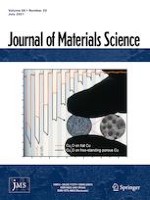09-04-2021 | Ceramics
On the production of novel zirconia-reinforced bioactive glass porous structures for bone repair
Published in: Journal of Materials Science | Issue 20/2021
Log inActivate our intelligent search to find suitable subject content or patents.
Select sections of text to find matching patents with Artificial Intelligence. powered by
Select sections of text to find additional relevant content using AI-assisted search. powered by
